

|
Okay, a brief history lesson:With the 27MHz CB Band's inception in 1958, the only mode of communication was Amplitude Modulation, or AM as we call it (Also referred to as the Ancient Mariner Side). This mode was "IT" for many years, and, as you can tell by the channel chatter today, still dominates the CB Frequency Spectrum! Gradually, as CB became more hobby, than personal business-use, sideband began to infiltrate the ranks. DSB, or Double-Sideband, was touted as the successor to AM, but in reality, DSB was AM!! (AM with a reduced carrier). DSB faded into oblivion, but left us some nice relics like the Regency Imperial II. E.F. Johnson came out with the popular model 350 "Johnny", which was a 2 channel sideband mobile. If Johnson had timed this models release a little later, it's legacy might have been different - but at this time, sideband was just barely catching on. Many models followed thereafter (and year later) - some good, some bad. So what is so great about Single-Sideband? On SSB you ditch your handles and other CB Jargon, and tend to enjoy conversations that are more normal - much like talking on the telephone. Sideband is more efficient too! Picture an Oreo cookie. Got it in your mind? Two crunchy wafers and a soft white middle, right? One cookie equals one channel (so if you took 40 cookies out and laid them side-by-side you'd have 40channels). Getting back to ONE cookie:  AM takes it's meager 4watt output and spreads it across the whole cookie (even though our radios are tuned to the middle), so much of what you actually transmit is not used efficiently. Now look at the two crunchy wafers: 1 is your lower sideband and the other is your Upper sideband.  By focusing your 4watts into just one wafer of the cookie/channel it seems like a lot more (Thus the 4watt/12watt difference in CB radio AM/SSB specs).
|
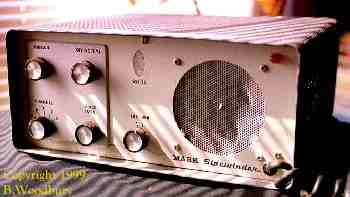 |
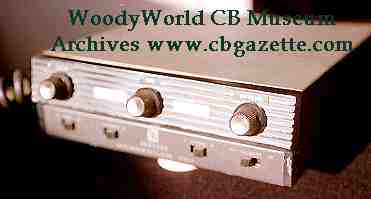 |
| The E.F. Johnson 350 "Johnny" was Johnson entry into the sideband market. While popular in small circles (much like the Mark Sidewinder), it never really "took off". It wasn't until much later, after sideband became universally popular that Johnson once again tested the SSB waters with the Viking 352 (1975/76). |
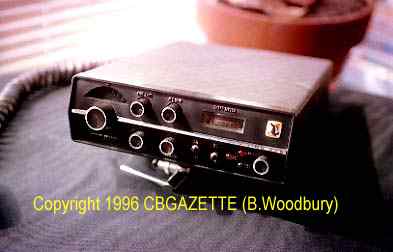 |
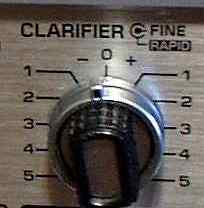 |
|
The single most important feature of a sideband radio is the clarifier control. This lil knob is what you'll use to tune in the other station so that they sound less like a cartoon duck, and more like a human! The FCC in their FINITE, limited, near sighted vision, decreed that Clarifiers could only legally work on the receiver part of your radio, leaving the transmitter rock steady on whatever frequency it left the factory at. All I can say to that one is: "DUH". This works great IF only two people are in contact with each other, as each person can tune into the other ones transmitter to get a more normal sounding signal. However, in most area's of the country, sidebanders tend to talk in late night "round robins" with four, five, or six other operators. With 5 operators, each with a factory adjusted transmitter, it would drive you crazy trying to move your clarifier each time. Obviously, the official that thought up this rule, was familiar with AM communications and not SSB! On sideband, it only takes a few Hertz difference to make the other guy's (or gal) audio sound good or bad (unlike AM). Thus, you find a high percentage of used CB's with the clarifier "unlocked" so that it moves both transmitter and receiver frequency at one time. This, of course, is illegal (Until someone decides to change the FCC Rules), but common. |
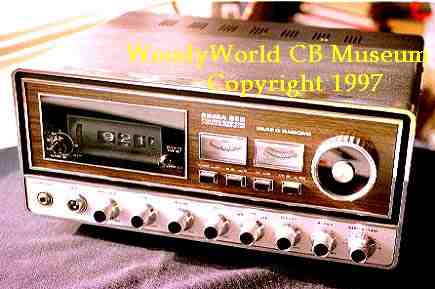 |
|
Are AM and SSB radios compatible? No. While you can understand most AM transmissions while on sideband, it's very difficult to understand SSB while on AM. To use both modes you should purchase an am/SSB radio. Are there a lot of people to talk with on Single-Sideband? Yes...and no. This depends on the area you live in. I've lived in some places where nary a SSB signal could be heard, and then others were heavily populated. Nonetheless, I've always owned an AM/SSB rig since the late sixties, and have never kicked myself for spending the extra money. Speaking of money, if you compare the price of a top end mobile like the PC76 and then look at a quality SSB rig like the Uniden Grant-XL you'll find that the price difference really isn't that bad. As a rule, the folks you meet on SSB are a decent lot, but just AM, there are those that spoil it for others. We have a few of this type in Houston that like to ruin conversations on 38, while others have heard the chaos from Phoenix on 36 when conditions are right (or in this case - wrong). Don't let it deter you though, as in life, you'll find good and bad wherever you go. 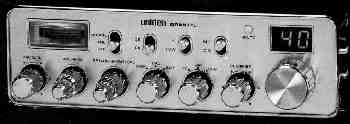
Whether you're talking SSB within the legal channels or outside of, almost all English speaking transmissions will take place on LSB (the lower side) and, when you talk on SSB keep your "lingo" to a minimum. Operators on AM sometimes tend to fill their transmissions with all kinds of jargon, but on sideband it's best to talk to someone as if it were a face-to-face conversation, using very few CB "Slang" words and definitely NO noise toys or echo mics (it's hard enough tuning someone in on SSB without the added trouble). One fellow from SouthEast Texas uses his call numbers once and his home-grown "handle" over and over again until you don't know if he lives in hokey-pokey Texas or goes by the name Hokey-Pokey....(BTW- next time you hear him, ask him to turn that echo OFF).
The first rule-of-thumb is to LISTEN. When the band is open and "skip" conditions prevail you'll hear a variety of communication methods and protocols. This is because each area of the country seems to have slight variations to other locations. To find out how your neck of the woods operates, wait until the skip conditions die out, then listen to the local chatter. You'll usually find sideband QSO's on channels 35-40. Lot's of areas use 38 as either a home frequency or calling channel, so it would be a good place to start. While local contacts can be made at anytime, look for the locals to appear late evenings, and early in the morning. Once you've established where they talk, now listen to determine what terminology is used. Some area's rely heavy on the "Q" codes while others tend to minimize their use. For the most part, you'll probably notice a lack of AM slang, and that the conversations sound like normal person-2-person talk. By now you are familiar with the Clarifier knob, and have become used to adjusting it to the other stations voice. Remember - unless you have had your radios clarifier unlocked, your transmit frequency remains the same no matter where you tune the Clarifier. So....the other station may sound okay to you, but if your off frequency somewhat, you'll either sound very LOW or HIGH pitched to them. Don't get mad if some operators won't talk to you until you "Get on frequency" - that's the way some of 'em are. Be polite. Okay....it's late at night and you've been listening to some locals yakking and want to break in to say hello - how do you do it? You could say "Break", and they may acknowledge you, or scorn you for using an AM term. Be Polite. You could say "QSK", which some areas use and I thinks it's another term we could live without. Be Polite. You could say "CQ", which doesn't have any relation to "Break" but I've heard it used in some areas. Be Polite. Or you could say "Station on the side", indicating you either have something to add to the conversation or want to call another station quickly. Any of these can apply to many areas, and regarding the local chatter, you pretty much have to "go with the flow". You'll hear most operators initiating a conversation with station numbers. Most of these are made up by the operator, some issued through a local, national, or Global club - But don't let that stop ya - pick yer own! (Try not to pick the same one another local uses though, as many op's are thin skinned about this). In the past, people have been injured over fights about who has had their "numbers" or "handle" longer..... After you've made contact with another station it's normal to swap first names and continue the conversation / QSO on a first name basis. If you're used to the AM jargon/slang, try to refrain from using it on SSB. Until you become integrated into the "group", try to keep from talking too long or taking up too much airtime on your first contacts with the local group, and by all means say hello to them when you run across them on the frequency. It won't be long before you too will be part of the local ssb scene! Unless you have something to say about an ongoing conversation, you can talk about the usual stuff: Radios/Antennas/Weather. Run so much power or modulation that you are distorted. This is annoying to anyone within earshot, especially locals! Avoid echo mikes, or if you use one, make sure it's OFF before talking on SSB. Don't do, or have done, the modulation mod on your radio. It removes the limiter which make you sound loud, but creates a trashy signal that is sure to annoy others, and Try to keep the Q-code talk to a minimum, you'll run into some operators who can make a whole sentence out of the list above. The Q codes are taken (and uses modified) from the Amateur Radio Service, and were designed to help morse code (dit-dah) operators carry on a conversation with less tapping. If you look at it from that standpoint, on sideband, you are extending your conversation by using Q-codes. For instance: Every area of the country has their own nuances so sometimes it's best to listen for awhile to determine the best way to talk. Good luck on your Sideband adventures! 73 Woody |